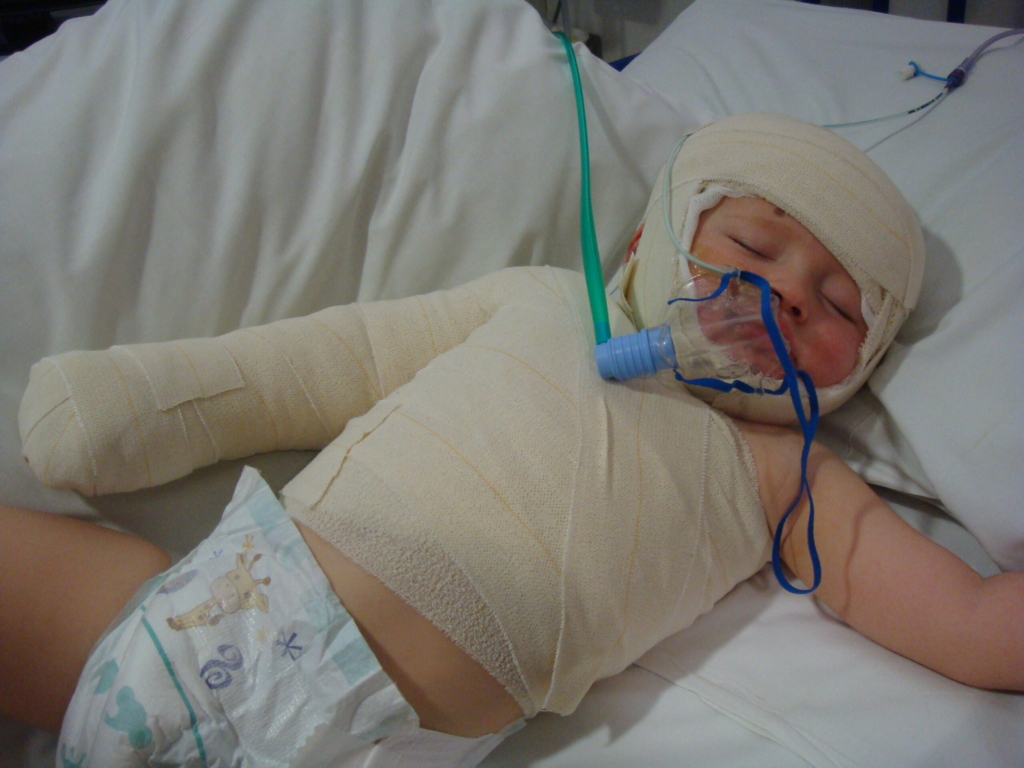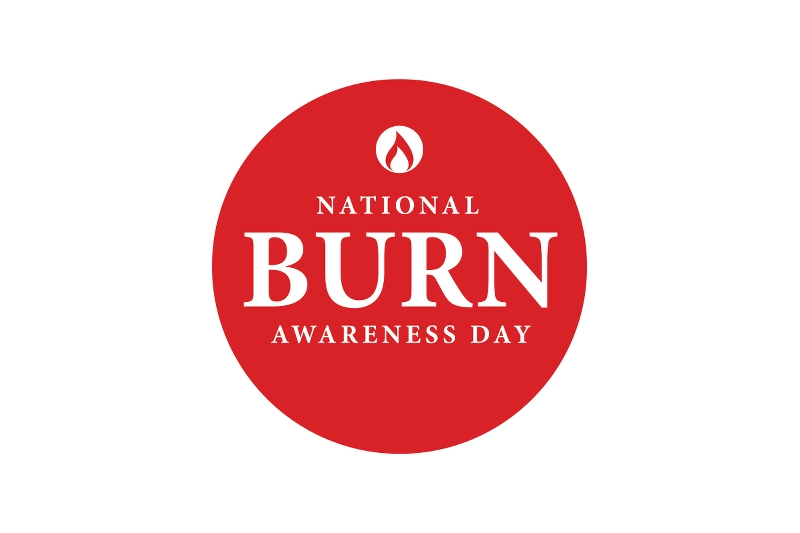Interview with Connor Rowntree – a burn survivor’s story
Connor Rowntree was injured as a teenager in a house fire. His story has been documented in a video we’ve shared previously, but Connor was kind enough to talk to us in person about his story for National Burn Awareness Day 2018. 
Connor, you were injured when you were 15. Can you tell us a little bit about what happened?
I was injured in an accident involving aerosols and petrol when I was staying at a friend’s house on May 17th 2009. All I really remember is sitting on a windowsill and touching the CD player, when I literally caught fire. I ran out of the window into the garden and my friend got a kitchen basin of water. My Dad was the first person on the scene, he didn’t recognise me at first, as I then sat on the grass convinced I was dying. My sister was also there, and she was stroking a small patch of skin at the top of my arm, telling me that everything would be ok. I literally can’t remember anything after that until 6 weeks later.
What other injuries did you sustain (in addition to the burns)?
I had multiple serious injuries, including kidney failure, a collapsed lung and ulcers. I caught an infection and nearly lost my leg to amputation.
I later discovered that it was 8 months before my parents were told that I was going to survive, it literally wasn’t certain before then that I would.
What happened with school?
The accident happened when I was in my second-to-last year of secondary school, year 10. It meant that I missed the whole of my final year at school, and wasn’t able to go back until all the exams were finished. Because I didn’t sit any exams at school, when I was discharged I then went to college where I sat my level 2 Maths and English, and passed both.
At the time it was hard to miss that year of school, however the school community and my friends were brilliant. They did a charity night for us and lots of other activities such as special cards and messages to show my family and I that they were thinking of us.
What do you remember from your time in hospital?
I was in hospital for 11.5 months in total, and I spent my 16th birthday there. They arranged for me to go over to St James Park to watch the Newcastle game, which was just brilliant.
I have lot of good and bad memories from my time in hospital. I had lots of nightmares from when I was in a coma for 6 weeks which was extremely upsetting. However, all round I would honestly say that I have more positive than negative memories. Which is entirely down to the staff there.
Because my burns were so severe, I didn’t go on to the children’s’ burns unit, so was treated in adult services. The nurses became extremely close to my family and the support was enormous. Because of the length of time I spent in hospital and the extent of my injuries, I became quite well known at the hospital and by the staff. It’s fair to say that I definitely had a bit of special treatment, and the staff went out of their way to do the most brilliant things for me, like organising a movie night – and relaxing visiting times for me so my family and mates could come and see me all the time. It turned the difficult experience of being in hospital for so long something much more bearable. This sort of thing made a massive difference to my recovery – as well as helping my family cope.
Surgery – tell us a bit about this, and your treatment.
My injuries were so serious and widespread across my body that they struggled to find skin to graft (these are called donor sites). There were only a few patches on my entire body, for example my scalp and buttock, where the skin wasn’t damaged. This made everything really difficult.
When I came out of intensive care I was still having three operations a week, which carried out for seven months. I had endless operations during that time. For the first 6 months to do a dressing change I had to go into theatre every single time because it was simply too painful to change the dressings unless I was under anaesthetic.
When I started coming around and they had covered me with grafts, we started doing lots of physiotherapy. I was on a pretty hardcore timetable to help me achieve the things I needed to do. I was spending about 6 hours a day on my physiotherapy, and other treatments included hydrotherapy, massages and time with occupational health.
Positive outcomes
You’ve had more surgery recently, what was that for?
Last November I had what is called a ‘release’ done on my neck. Because my skin has changed and grown since the original grafts, I had skin which was pulling and puckering on my neck. This recent operation has made me more comfortable and given my face and neck more of a profile.
I have a few, similar surgeries planned which I’m looking forward to. For me, ongoing operations like this are positive. It stops me looking back and I think of the process as me being in control of body and long-term future. I always move forward, I never dwell on the past, it’s just not me!
You went on to carry on your passion for go-karting and attended college.
When I came out of hospital, I spent the year after college enjoying myself, and doing what I wanted. Like any other young adult. At school my favourite subject was resistant materials, and at college I took this forward and studied motor vehicle bodywork. I like being hands on.
What did you learn from your experiences? How do you reflect on your journey in everyday life?
Since I came out of hospital I have done many things that I’m proud of, including fronting a fire awareness campaign 2010. After that, everything started to get a bit crazy as people became interested in my story and others wanted me to share my experience to help others. I working with kids to help raise awareness about aerosol dangers.
During that time, I was travelling up and down the country talking to kids about dangers, including those who might be vulnerable (some of them as young as 4 years old). I started being nominated for different awards, including the Pride of Wearside. I was even lucky enough to have the opportunity to carry the Olympic torch in 2012.
During that time, life was really chaotic, and I began to crave a bit of a quieter time. So, I trimmed down the amount of awareness work I was doing, stopped travelling here-there-and-everywhere and settled down to get some calm. I got a job, spent time with my family and tried to have a more normal life. I was thrilled that my girlfriend Beth accepted my proposal and is now my fiancée. Life is good – no, great!
If you could give one message or piece of advice to another young person who was burned as a child, what would it be?
I have two key messages really. The first, is to keep looking forward. Taking control of things like ongoing surgery is a great way of moving on, having something to look forward to that makes our life better every day is really important.
Linked to this, is my second tip which is do whatever it takes to boost your confidence. I’m not ashamed to say that I use make up, it gives me a real confidence boost and makes me feel better in my own skin. Make-up definitely isn’t just for girls, and I wish more male burn survivors would consider using it, it’s a brilliant thing.
Connor is also fronting the Tyne and Wear Fire and Rescue Service’s Fire Safety Campaign 2018. For more information please visit: http://www.twfire.gov.uk/
Related content

Donate to us

Campaigns
